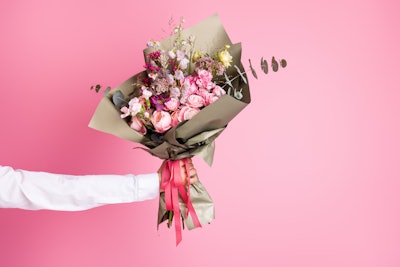
The annual holiday of love is upon us, and consumers across the country are going all out to celebrate. In fact, they are expected to spend a record-breaking $25.9 billion on Valentine’s Day this year, up from $23.9 billion in 2022. Love is in the air—and what better way to express it than sending a beautiful bouquet of flowers?
Shipping flowers has its unique challenges at any time of year. They’re fragile, need refrigeration and often come from afar. Given the volume of demand on Valentine’s Day, the stakes are even higher. More than 250 million roses are grown alone for the holiday, and suppliers have the precarious task of ensuring the precious buds arrive at retailers and flower shops on time.
So, how do flowers get from farms to warehouses, to shops and eventually, to their destinations?
A flower’s journey from farm to vase
Before buyers pick up roses from their local flower shop, those flowers make a trek across the globe. Most Valentine’s Day flowers are cultivated along the equator in Ecuador, Colombia or Kenya, where perfect growing conditions persist year-round. Once the blossoms are plucked and prepped, they’re packed by hand into refrigerated airplanes for the start of their journey.
Chilly charter planes give flowers a first-class flight to Miami, where most wholesalers in the U.S. operate. There, thousands of seasonal workers meticulously sort flowers into smaller boxes or gift packaging to be loaded onto planes, freight trucks or delivery vans headed to destinations throughout the U.S. Once they arrive, it’s up to couriers to deliver flowers to local florists, retailers or consumers’ doorsteps.
The economic outlook: No rose without thorns
Despite the intricacy of flowers matched with a complicated supply chain, florists nationwide have functioned almost seamlessly for decades. But the Covid-19 pandemic brought a new wave of demand. The gifting industry soared, and consumers turned to flower deliveries as ways to connect with loved ones when they couldn’t be together in person.
This trend continued into 2022. Now that the Covid-19 pandemic is on the downturn, demand has dropped for florists. Distributors are bracing themselves for a “down economy,” filled with less demand for the year, higher supply chain costs and labor shortages.
In the face of economic hurdles, veteran distributors like 1-800-Flowers and Florists' Transworld Delivery (FTD) are stepping up to the challenge of delivering flowers straight to doorsteps on time for Valentine’s Day. Typically, distributors work closely with carriers and logistics providers to prepare for the holiday by adjusting shipments to take on a higher percentage of flower loads. In other words, they’re asking shipping partners to prioritize flowers over other deliveries and extending shipping estimates for other orders.
To increase shipping efficiency, shippers have also turned to full-featured parcel transportation management systems (PTMS). It can determine whether there are enough shipments to justify a full truck or less-than-truckload (LTL) or whether those items would be better serviced through parcel delivery.
Just in time for Cupid’s big day
The bouquets’ journey—despite its complexity—is completed in mere days, making the feat that suppliers, shippers, and couriers undertake nothing short of magical. As shippers and retailers face an added challenge of market volatility, their deliveries in time for love’s big day are even more impressive.
This week, flowers are making their way to loved ones’ worldwide. And, thanks to careful preparation, transportation management solutions and resiliency across supply chains, shippers are well-positioned to deliver everyone’s favorite florets.



















